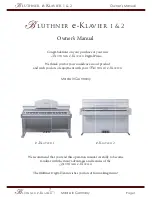
Hazardous Area Operation
Other Hazardous Area Considerations
A-16
Prima PRO & Sentinel PRO Mass Spectrometers User Guide
Thermo Fisher Scientific
instrument power is restored. Switch the system into override and off
again, and check that this is correctly indicated in GasWorks.
The purge outlet / monitor unit is powered by 24 Vdc and handles all
the purge monitoring and logic. The enclosure pressure is measured
and the pressure set point adjusted using controls within this unit.
Spent purge air exits the enclosure through the unit that also
maintains the system backpressure. A spark suppressor is
incorporated in the exhaust to ensure safe operation in the event of a
serious internal problem in the purged enclosure.
A digital output is available from the purge controller and provides
an indication of purge status through the control interface software
GasWorks and hence remotely via the available communication
channels.
To test the purge functionality, open the enclosure door to simulate a
purge failure and verify that the purge controller indicates this
correctly. Check also that Z-Purge Status is indicated to be in the
alarm condition in the system software. When the door is closed, the
enclosure should pressurise, and after a few seconds the purge
controller should indicate that the pressure is OK and the Z-Purge
Status alarm will clear.
Hazardous atmospheres are prevented from entering the enclosure by
means of the purge protection system. However, consideration also
has to be given to the possibility that part of the system could be
heated beyond the maximum temperature for the T class of the
instrument. If this part is external, the hazardous atmosphere around
the enclosure is then directly exposed to a hot, ignition capable
surface. Similarly, if an internal component was to overheat, a
potentially hazardous situation could arise if the enclosure door was
opened before the component had cooled, even though power may
have removed from the system.
Most of the heated assemblies in the system are designed so that if
full power is applied to the heaters a hazardous condition will not
result. The exception to this is the main RMS body heater. Although
this uses a controller to regulate temperature (up to 120°C), in a fault
(runaway) condition certain regions could exceed the limits for the T
class. Part of the heated body of the inlet is exposed to the external
atmosphere and the thermal mass is such that internal parts would
take a significant time to cool after power is switched off. To protect
Z-Purge Systems
Other
Hazardous
Area
Considerations
Temperature
Over-Temperature
Protection















































